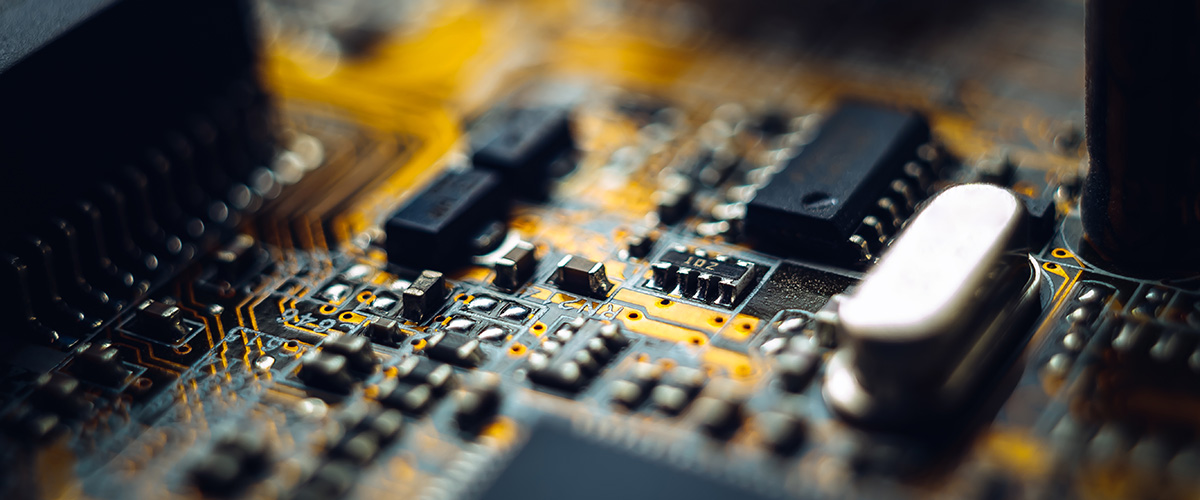Hi there, and welcome to your 2025 U.S. Electronics Industry Check-In.
This is your all-in-one electronics industry breakdown. And to help us break it all down, we’ve got insights from Atradius Underwriter Matt Tikiob, who’s been tracking the trends shaping the industry.
Right now, the electronics space is in an interesting spot. There’s strong demand for AI, 5G, and advanced hardware – that’s keeping things moving. At the same time, companies are navigating shifting trade policies, global tensions, and growing pressure to meet environmental and social expectations.
It’s not perfect, but the outlook for 2025 is still looking positive. Growth may not be explosive, but it’s steady. And with more production happening on U.S. soil and innovation continuing to push forward, there’s plenty to keep an eye on.
Explore more insights from other industries here.
Electronics
How Does Credit Insurance Protect ICT and Electronics Companies?
Learn how credit insurance helps technology and electronics businesses stay resilient against tightened credit control, component shortages, fast-changing global demand, and more.
Learn MoreGet in Touch
Looking For a FREE Quote?
Obtaining a free Trade Credit Insurance quote or just some more information is fast and easy! Get in touch with us today.
Get Started Call 800-822-3223Steady Growth Amid Trade Uncertainty
So, what’s keeping the U.S. electronics industry moving in 2025? A big part of it is growing demand for AI chips and computing hardware. That surge is helping push domestic electronics production up by about 6.5% this year. The same demand is also encouraging more companies to bring manufacturing back to the U.S.
Federal programs like the CHIPS Act have played a big role in this shift, encouraging companies to expand their U.S. operations and reduce their dependence on foreign suppliers.
That said, it’s not all smooth sailing. Trade uncertainty is still a major challenge. With tariffs and export rules constantly shifting, its tough for manufacturers and investors to plan ahead. While these tensions have helped spark more local investment, they’ve also made things more complicated when it comes to sourcing a long-term strategy.
Subsector Performance
Not every part of the U.S. electronics industry is moving at the same speed in 2025. Semiconductor and components are leading the pack, with 10.5% growth expected. That’s mostly thanks to the ongoing demand for AI, cloud computing, and data centers. Computer and office equipment is also doing well, growing 10.6%, helped by the continued rollout of Windows 10 upgrades.
But it’s not all good news. Precision equipment is seeing slower demand and cautious investment. And consumer electronics is having a tough time, with a 6.6% drop expected. People are holding onto their devices longer, and the market is feeling saturated.
So yes, the industry is growing, but it’s a mix. Some areas are thriving, others are slowing down, and overall momentum isn’t quite where it was last year.
ESG and Ethical Supply Chains: Growing but Limited Influence
Environmental and social concerns are starting to influence how and where companies invest but they’re not in charge yet.
Onshoring is partly motivated by stricter U.S. labor laws, which helps companies avoid reputational risks tied to forced or underage labor in overseas supply chains – which is definitely a win for ESG. Meanwhile, some firms continue sourcing from regions with weaker labor and environmental protections simply because it’s cheaper. Ethical supply chains remain more of a goal than a reality.
Meanwhile, electronic waste is becoming a bigger issue. This U.S. generates nearly 7 million tons of e-waste each year, but recycling rates remain low. This is leading to rising concerns about environmental justice, especially in communities near disposal sites.
Risk: Stable, but Not Comfortable
Financially, most electronics companies are holding steady. Those with strong balance sheets are managing just fine, and solid earnings are helping others stay afloat even if their finances aren’t perfect.
But the bigger issue is uncertainty. Without a clear and consistent trade and regulatory framework, it’s tough for buyers to commit to long-term plans. Tariff changes and sourcing disruptions are still a real concern, making it harder to lock in strategies or invest confidently.
If policies were more predictable, producers could plan ahead with fewer surprises, and domestic production would be a lot more reliable. Even with decent financial health across the sector, that lingering uncertainty is keeping risk levels from truly improving.
AI: The Wild Card in the Cycle
AI has become the biggest wild card of the decade. Historically, the electronics industry has moved in cycles, with semiconductors and components swinging between booms and busts. Thanks to AI, we’re in a boom phase. But here’s the interesting part: we haven’t seen a full AI cycle play out yet.
Unlike traditional electronics, the AI demand hasn’t hit saturation or replacement stages. This means we’re still in the early stages and the eventual slowdown will have a huge impact.
To add to impact, monetary policy, evolving fiscal priorities, and unpredictable trade moves will continue distorting both global demand patterns and production strategies, making the next few cycles very unpredictable.
Bottom Line
The U.S. electronics industry in 2025 is growing, adapting, and cautiously optimistic. AI and onshoring are fueling progress, but trade uncertainty, ESG challenges, and uneven subsector performance are keeping things complicated.
The industry’s next chapter will depend on how well it can balance innovation with resilience and how quickly it can adapt to whatever comes next.


